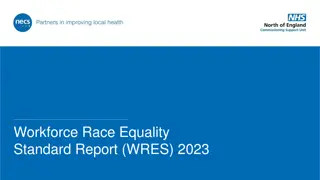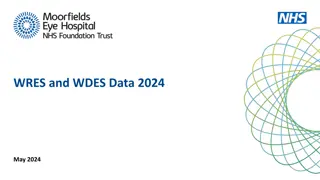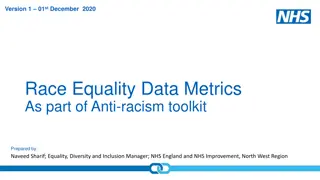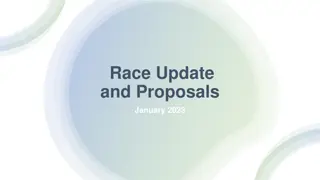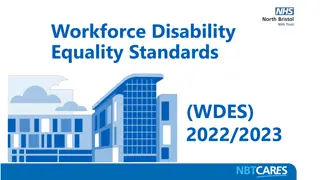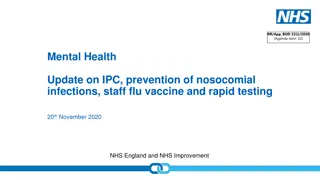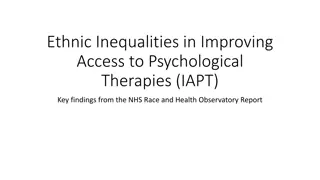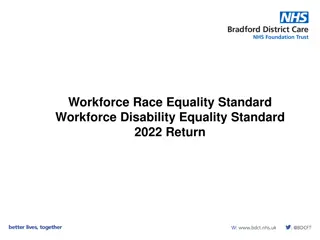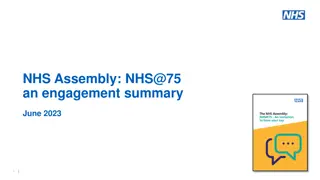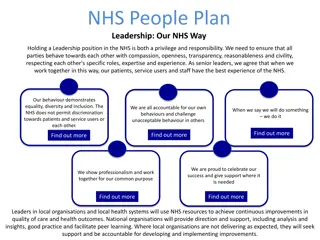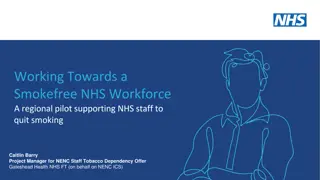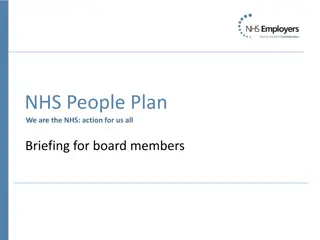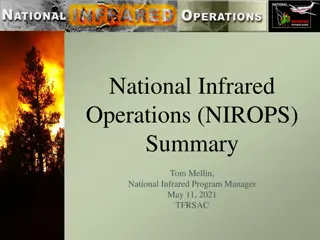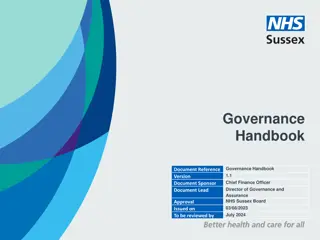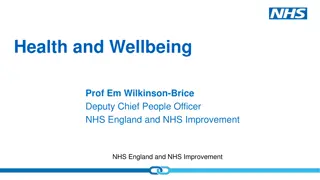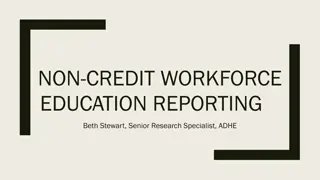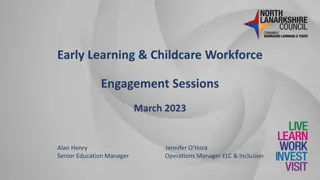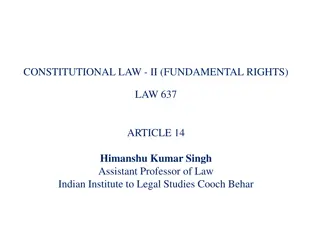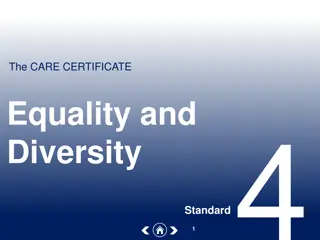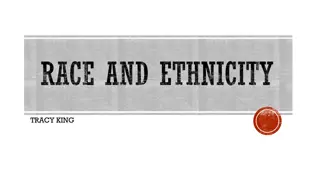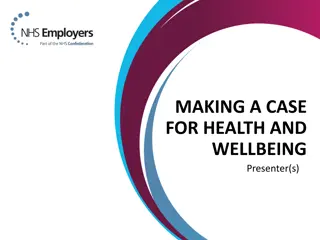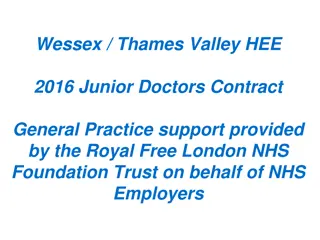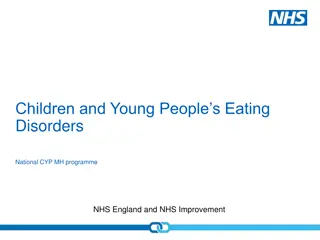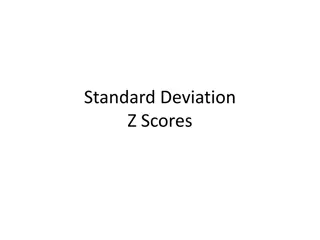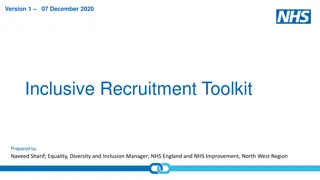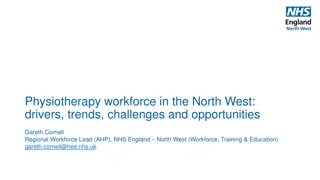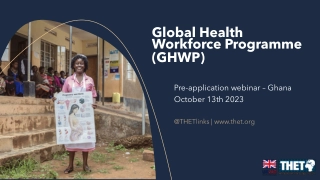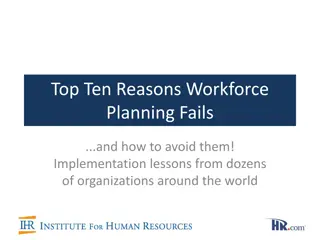NHS Workforce Race Equality Standard (WRES) Report Summary 2019/2020
The NHS mandated the Workforce Race Equality Standard (WRES) in 2015 to address race inequality in healthcare. This report highlights key findings for 2019/2020, comparing them to the previous year, focusing on the nine WRES indicators. Organisations use these indicators to enhance experiences and opportunities for Black, Asian, and Minority Ethnic (BAME) staff. The report details the indicators, data comparison between White and BAME staff, and the aim to improve workplace representation and experience for BAME individuals.
Download Presentation

Please find below an Image/Link to download the presentation.
The content on the website is provided AS IS for your information and personal use only. It may not be sold, licensed, or shared on other websites without obtaining consent from the author. Download presentation by click this link. If you encounter any issues during the download, it is possible that the publisher has removed the file from their server.
E N D
Presentation Transcript
Workforce Race Equality Standard Report (WRES) April 2019 March 2020 June 2020 1 Advise / Resolve / Learn
Introduction The Workforce Race Equality Standard (WRES) was mandated in 2015 for NHS commissioners and NHS healthcare providers as a means of tackling workforce race inequality across the NHS. In 2017, national healthcare organisations were invited to implement WRES and report their findings against the nine WRES indicators. In line with our business plan and Equality Diversity and Inclusion (EDI) strategy, we committed to publish our WRES findings with the aim to identify and address any areas that will improve the workplace experience and representation at all levels for Black, Asian and Minority Ethnic (BAME) staff. This report provides a summary of the key findings in this reporting period (2019/2020), in comparison to the previous year (2018/2019) against the nine indicators. 2 Advise / Resolve / Learn
The nine WRES Indicators To assist organisations to identify and improve BAME staff experiences and opportunities, they are required to collate and self-assess against nine indicators. The nine indicators were developed in collaboration with the wider NHS. Four focus on workforce data and four are based on data from the national NHS Staff Survey questions. The last indicator focuses upon BAME representation on boards. These are detailed in the table below: 1 2 3 4 5 6 7 8 9 Board National NHS Staff Survey indicators (or equivalent) Workforce indicators representation indicator Percentage of staff in each of the AfC Bands 1-9 and VSM (including executive Board members) compared with the percentage of staff in the overall workforce Relative likelihood of staff being appointed from shortlisting across all posts Relative likelihood of staff entering the formal disciplinary process, as measured by entry into a formal disciplinary investigation Relative likelihood of staff accessing non- mandatory training and CPD Percentage of staff experiencing harassment, bullying or abuse from patients, relatives or the public in last 12 months Percentage of staff experiencing harassment, bullying or abuse from staff in last 12 months Percentage believing that trust provides equal opportunities for career progression or promotion In the last Percentage of staff who have personally experienced discrimination at work from manager/team leader or other colleagues in the last 12 months This indicator presents the percentage difference between (i) the organisations Board voting membership and its overall workforce and (ii) the organisations Board executive membership and its overall workforce. 3 Advise / Resolve / Learn
The nine WRES indicators Each indicator compares data for white and BAME staff. For the purpose of reporting for WRES, White staff include White British, Irish, Eastern European and any other white . The Black, Asian and Minority Ethnic staff category includes all others except unknown and not stated. In the report, the data will show the likelihood of an outcome for some indicators and this is presented in ratios. For example, for indicator 2, i.e. relative likelihood of staff being appointed from shortlisting across all posts, a figure of 1.15 would indicate that for every 1 BAME appointment, there is 1.15 White appointments. A figure below 1 would indicate that BAME candidates are more likely than white candidates to be appointed from shortlisting. The next set of slides presents the full breakdown of the NHS Resolution WRES results by indicator for 2019/2020. 4 Advise / Resolve / Learn
WRES Indicator 1 This indicator presents the percentage of staff in each of the AfC Bands 1-9 or Medical and Dental subgroups and Very Senior Manager (VSM) (including executive Board members) compared with the percentage of staff in the overall workforce. The figures below represent permanent and Fixed term contract staff and does not include agency staff. BAME/White/ Not Declared 2018/2019 Headcount 2019/2020 Headcount 2018/2019 % of Workforce 64.6% 2019/2020 % of Workforce 63.2% % Difference White 192 227 -1.40% BAME 103 127 34.7% 35.4% 0.70% Not Declared 2 5 0.7% 1.4% 0.70% Total 297 359 100% 100% The proportion of Black, Asian and Minority Ethnic (BAME) employees has increased to 35% in 2019/20. As we continue to grow our workforce in Leeds, it is important that we understand our regional figures and how these align to the local population. 5 Advise / Resolve / Learn
WRES Indicator 1 The below charts show the current workforce profile against the regional profile information. These figures are based on the 2011 census data. NHS Resolution s workforce profile is aligned to the regional figures with a noted higher representation in Leeds. It is, however, important to note that the Leeds figures are based on a small number of staff. Although closely aligned to the regional figures, we still show a slight underrepresentation of BAME staff in London. In contrast, we employ a higher number of BAME staff in Leeds when compared to the regional figures. London 61.3 60 Headcont % 40 34.4 4.3 BAME White Do not wish to disclose my ethnicity Workforce Profile Regional Profile 6 Advise / Resolve / Learn
WRES Indicator 1 The table below shows BAME and White representation in non-clinical roles by the total number of staff in each Agenda for Change (AfC) pay banding, VSM pay (employees who are paid above Band 9). In this reporting period, NHS Resolution did not employ staff in clinical roles (those who provide direct care to patients). However, we did employ one member of staff on Medical and Dental terms. Band 2018/2019 White 2019/2020 White White Variance 2018/2019 BAME 2019/2020 BAME BAME variance Band 3 1 4 3 8 2 4 Band 4 12 12 13 13 1 1 Band 5 12 7 14 17 2 10 Band 6 26 16 27 19 1 3 Band 7 48 30 47 32 -1 2 Band 8a 26 10 41 15 15 5 Band 8b 28 12 46 13 18 1 Band 8c 18 2 19 3 1 1 Band 8d 11 4 8 6 -3 2 Band 9 0 2 0 1 0 -1 Medical 0 0 1 0 1 0 ESM/VSM 8 0 8 0 0 0 While a number of the pay bands are closely aligned to the organisation s overall ethnicity ratio, there is a clear underrepresentation of BAME staff at the ESM level. This is consistent with the national data around the lack of BAME staff at senior level within the NHS (Kline, March 2014) and industry in general. The information also shows that there is an overrepresentation of BAME staff within the lower pay bands. 7 Advise / Resolve / Learn
WRES Indicator 2 This indicator measures the likelihood of staff being appointed from shortlisted across all posts. Using the WRES Technical Guidance to calculate this indicator, for every 1 BAME candidate, 1.34 White candidates areappointed from shortlisting. This sees an increase of 0.19 compared to 2018/2019 where White staff were 1.15 more likely to be appointed from shortlisting. Timescale Number appointed from shortlist* Number shortlisted* (April 2019-March 2020) White 422 51 BAME 445 40 Not Stated 52 8 Total 919 99 *The figures include individuals shortlisted and appointed through roles advertised via NHS Jobs and through Expressions of Interests 8 Advise / Resolve / Learn
WRES Indicator 3 This indicator measures the likelihood of staff entering the formal disciplinary process, compared to that of White staff entering the formal disciplinary process, as measured by entry into a formal disciplinary investigation. For the second year running, NHS Resolution had no staff entering a formal disciplinary process within the reporting period. 9 Advise / Resolve / Learn
WRES Indicator 4 This indicator measures the relative likelihood of staff accessing non-mandatory training and CPD training. The relative likelihood of White staff accessing non-mandatory training and CPD as compared to BAME staff is 0.79. So while BAME staff are more likely to access non- mandatory training and CPD than white staff, there is an increase in the likelihood of White staff accessing non-mandatory training by 0.11 compared to 2018/2019. The data below shows number of non-mandatory CPD courses taken by White and BAME staff as well as staff who have opted not to state their ethnicity within the 2019/2020 reporting period. Timescale No. of non-mandatory CPD courses taken* Headcount (April 2019-March 2020) 227 White 220 127 BAME 156 5 Not Stated 15 359 Total 391 *The number of non-mandatory CPD courses taken by staff includes where multiple opportunities have been accessed by a single employee. The figures only include the number of non-mandatory CPD courses accessed by individuals that were centrally recorded by the HR&OD Team. 10 Advise / Resolve / Learn
WRES Indicators 5 - 8 WRES indicators five to eight measure data from the below national NHS Staff Survey questions: % of staff experiencing harassment, bullying or abuse from patients, relatives or the public in last 12 months % of staff experiencing harassment, bullying or abuse from staff in last 12 months % staff believing that trust provides equal opportunities for career progression or promotion % staff personally experienced discrimination at work from Manager/team leader or other colleague While we did not conduct a national staff survey in 2019/2020, we did carry out an organisation-wide survey as part of our Investors in People (IiP) re-accreditation. As this is an independent accreditation, the questions asked in the survey are not aligned to the national survey and we are unable to access the data to analyse responses by ethnicity. For our 2020/2021 WRES submission, we will ensure the staff survey, which is scheduled to take place in October 2020, is commissioned to include the right questions and staff demographics in order to respond directly to the WRES indicators 5 to 8. 11 Advise / Resolve / Learn
WRES Indicator 9 This indicator presents the percentage difference between (i) the organisations Board voting membership and its overall workforce and (ii) the organisations Board executive membership and its overall workforce. The table below presents our 2019/2020 findings for WRES indicator 9. NHS Resolution currently has no BAME board members. It should be noted that Non- executive Director and Chair appointments are ministerial appointments managed centrally, therefore NHS Resolution has no control over the recruitment to these Board level positions. Additionally, as there were no executive board member vacancies or turnover no appointments were made during the 2019/2020 reporting period. As such, the board profile remains unchanged from 2018/2019. 12 Advise / Resolve / Learn
WRES Indicator 9 18/19 White 19/20 White White variance 18/19 BAME 19/20 BAME BAME Variance 18/19 Not Stated 19/20 Not Stated Not Stated Variance Number of staff in workforce 192 227 103 127 2 5 35 24 3 Total Board members by ethnicity 12 12 - 0 0 - 0 0 - Total Board members - % by ethnicity 100% 100% 0% 0% 0% 0% - - - Voting Board members - headcount 9 9 - 0 0 - 0 0 - Voting Board members - % by ethnicity 100% 100% 0% 0% 0% 0% - - - Non-voting members - headcount 3 3 - 0 0 - 0 0 - Non-Voting members - % by ethnicity 100% 100% 0% 0% 0% 0% - - - Executive Board members - headcount 4 4 - 0 0 - 0 0 - Executive Board members % by ethnicity 100% 100% 0% 0% 0% 0% - - - Non Exec. Board members - headcount 7 7 - 0 0 - 0 0 - Non Exec. Board members % by ethnicity 100% 100% 0% 0% 0% 0% - - - Overall Workforce - % by ethnicity 64.6% 63.2% 34.7% 35.4% 0.7% 1.4% -1.4% +0.7% +0.7 Overall Difference (total % Board total % workforce by ethnicity) 35.4% 36.8% -34.7% -34.7% -0.7% -0.7% - - - 13 Advise / Resolve / Learn
Action Plan Based on the outcomes of this WRES report, below are our areas of focus : Improving representation of BAME staff at higher pay bands and at VSM level. Identifying and removing any barriers that may prevent candidates from a BAME background from applying and being appointed in roles within NHS Resolution. Ensure learning and development opportunities translate into more opportunities for career progression for BAME staff. In the last year, below are some of the steps we ve already taken to improve the experiences and opportunities for our BAME staff: Promoted and supported access to leadership development for all levels of staff Promoted and supported external leadership development opportunities aimed specifically at BAME staff i.e. Ready now programme and Stepping up programme Implemented the Junior Case Manager apprenticeships, which is a positive step in supporting career progression for BAME groups. HR & OD team have offered career coaching and interview skills to support and improve competency and confidence around the large-scale recruitment campaigns 14 Advise / Resolve / Learn
Action Plan Moving forward, our Equality, Diversity and Inclusion strategy, drafted ahead of this report, has identified some additional actions that will assist the organisation to see year-on-year improvements against the nine indicators as a result of improving our BAME representation, experience and engagement. Below are some of the actions we will carry out: Review the support available to internal applicants and employees from one or more under-represented groups at all levels i.e. nominated person to talk through vacancy, proof reading applications and mock interviews. Engage with staff from a BAME background by establishing a BAME staff network within NHS Resolution (due to launch in August 2020). Continue to promote and support external leadership development opportunities aimed specifically at BAME staff i.e. Ready now programme and Stepping up programme. Provide targeted coaching and (sponsorship) mentoring to staff from under-represented groups to assist with staff progression within the organisation. Ensure the NHS Resolution Leadership Development Programme reflects EDI principles around a just and learning culture. Review current career pathways to create transparency and remove any barriers for under-represented groups. Create cross organisational understanding of civility and impact on staff through staff survey data In addition to the actions above, we will also we will ensure the staff survey, which is scheduled in Autumn this year, is commissioned to include the right questions and staff demographics in order to respond directly to the WRES indicators 5 to 8. 15 Advise / Resolve / Learn


